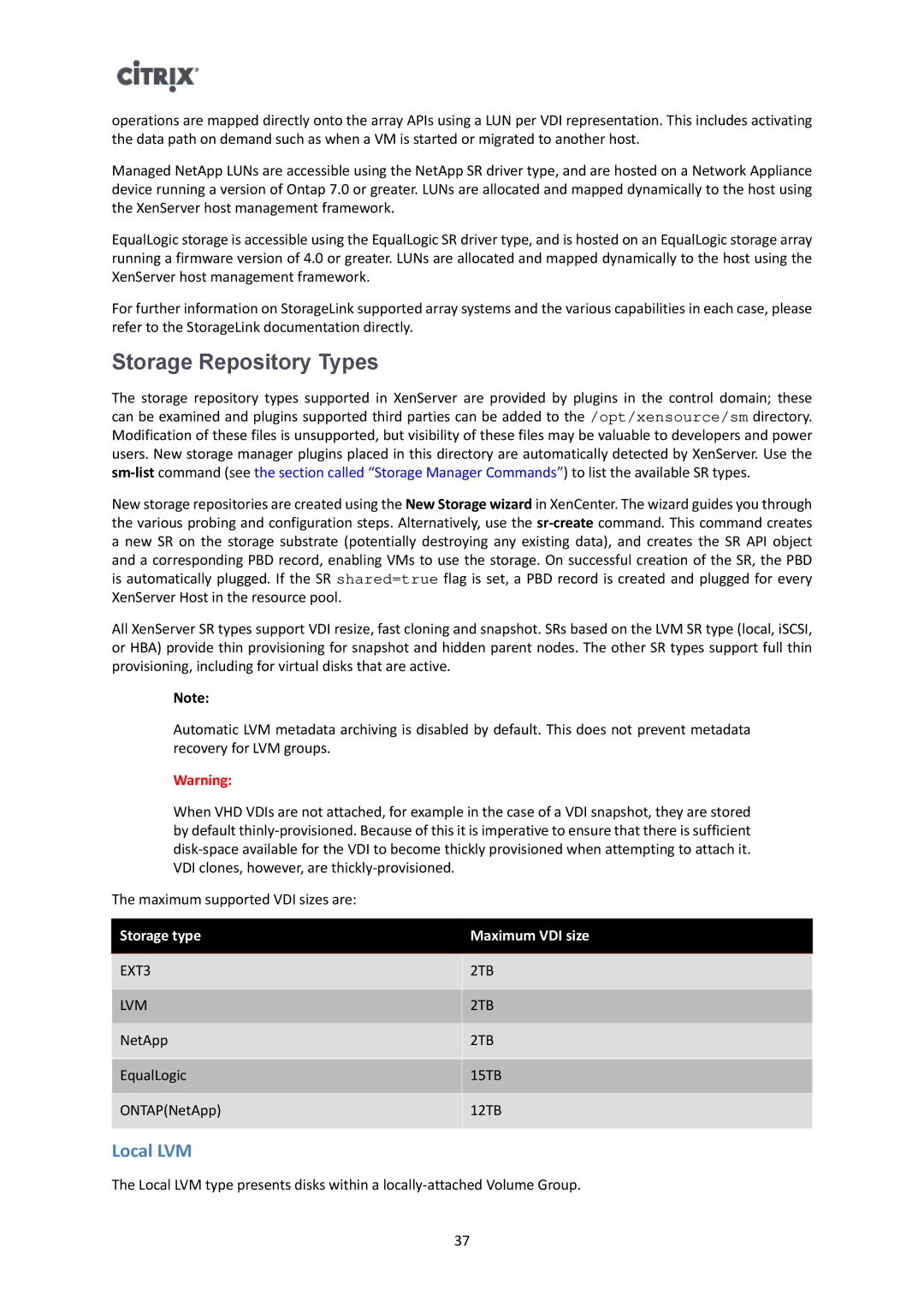operations are mapped directly onto the array APIs using a LUN per VDI representation. This includes activating the data path on demand such as when a VM is started or migrated to another host.
Managed NetApp LUNs are accessible using the NetApp SR driver type, and are hosted on a Network Appliance device running a version of Ontap 7.0 or greater. LUNs are allocated and mapped dynamically to the host using the XenServer host management framework.
EqualLogic storage is accessible using the EqualLogic SR driver type, and is hosted on an EqualLogic storage array running a firmware version of 4.0 or greater. LUNs are allocated and mapped dynamically to the host using the XenServer host management framework.
For further information on StorageLink supported array systems and the various capabilities in each case, please refer to the StorageLink documentation directly.
Storage Repository Types
The storage repository types supported in XenServer are provided by plugins in the control domain; these can be examined and plugins supported third parties can be added to the /opt/xensource/sm directory. Modification of these files is unsupported, but visibility of these files may be valuable to developers and power users. New storage manager plugins placed in this directory are automatically detected by XenServer. Use the
New storage repositories are created using the New Storage wizard in XenCenter. The wizard guides you through the various probing and configuration steps. Alternatively, use the
All XenServer SR types support VDI resize, fast cloning and snapshot. SRs based on the LVM SR type (local, iSCSI, or HBA) provide thin provisioning for snapshot and hidden parent nodes. The other SR types support full thin provisioning, including for virtual disks that are active.
Note:
Automatic LVM metadata archiving is disabled by default. This does not prevent metadata recovery for LVM groups.
Warning:
When VHD VDIs are not attached, for example in the case of a VDI snapshot, they are stored by default
The maximum supported VDI sizes are:
Storage type | Maximum VDI size |
|
|
EXT3 | 2TB |
|
|
LVM | 2TB |
|
|
NetApp | 2TB |
|
|
EqualLogic | 15TB |
|
|
ONTAP(NetApp) | 12TB |
|
|
Local LVM
The Local LVM type presents disks within a
37
